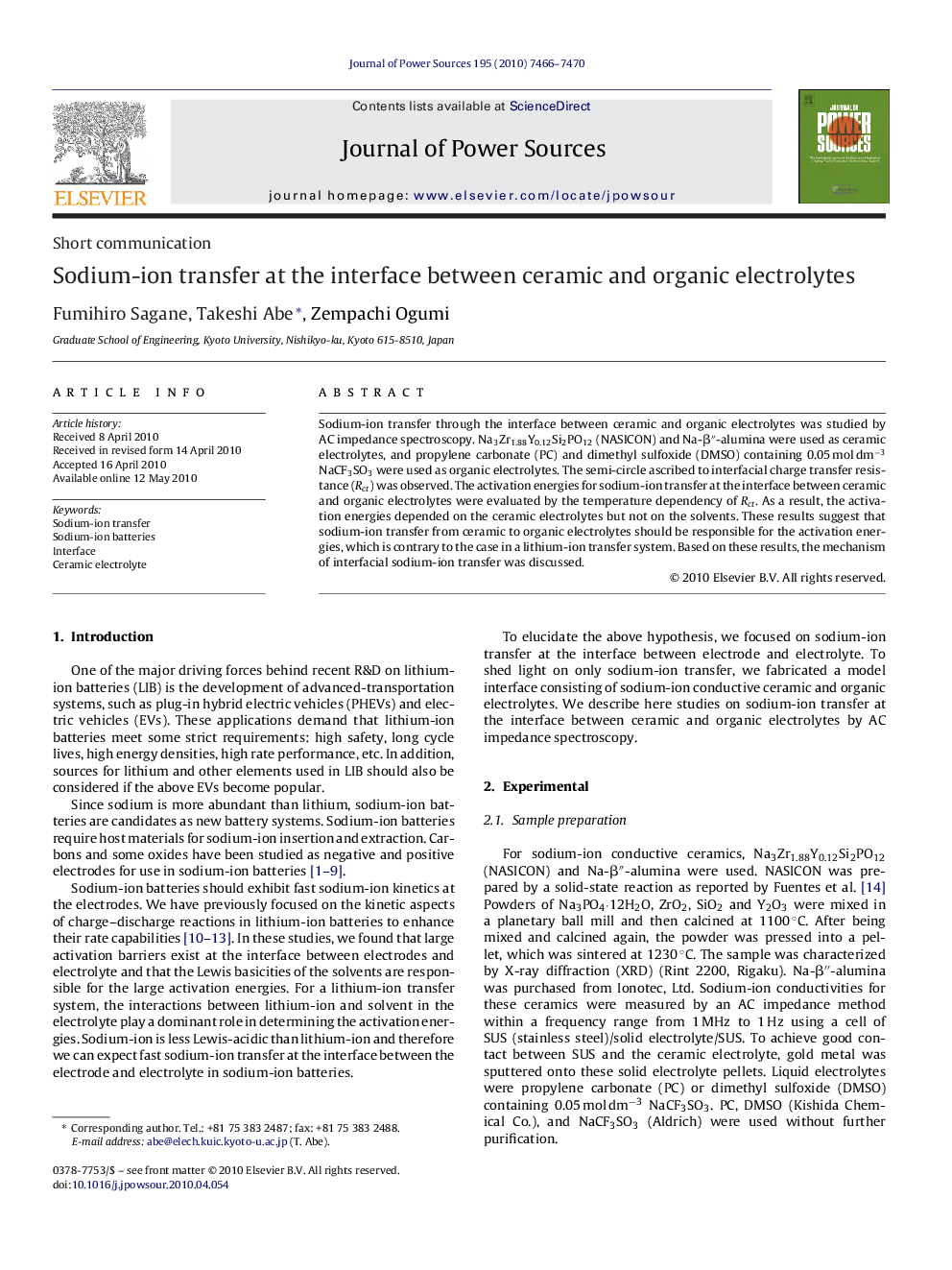| Article ID | Journal | Published Year | Pages | File Type |
|---|---|---|---|---|
| 1284903 | Journal of Power Sources | 2010 | 5 Pages |
Sodium-ion transfer through the interface between ceramic and organic electrolytes was studied by AC impedance spectroscopy. Na3Zr1.88Y0.12Si2PO12 (NASICON) and Na-β″-alumina were used as ceramic electrolytes, and propylene carbonate (PC) and dimethyl sulfoxide (DMSO) containing 0.05 mol dm−3 NaCF3SO3 were used as organic electrolytes. The semi-circle ascribed to interfacial charge transfer resistance (Rct) was observed. The activation energies for sodium-ion transfer at the interface between ceramic and organic electrolytes were evaluated by the temperature dependency of Rct. As a result, the activation energies depended on the ceramic electrolytes but not on the solvents. These results suggest that sodium-ion transfer from ceramic to organic electrolytes should be responsible for the activation energies, which is contrary to the case in a lithium-ion transfer system. Based on these results, the mechanism of interfacial sodium-ion transfer was discussed.
